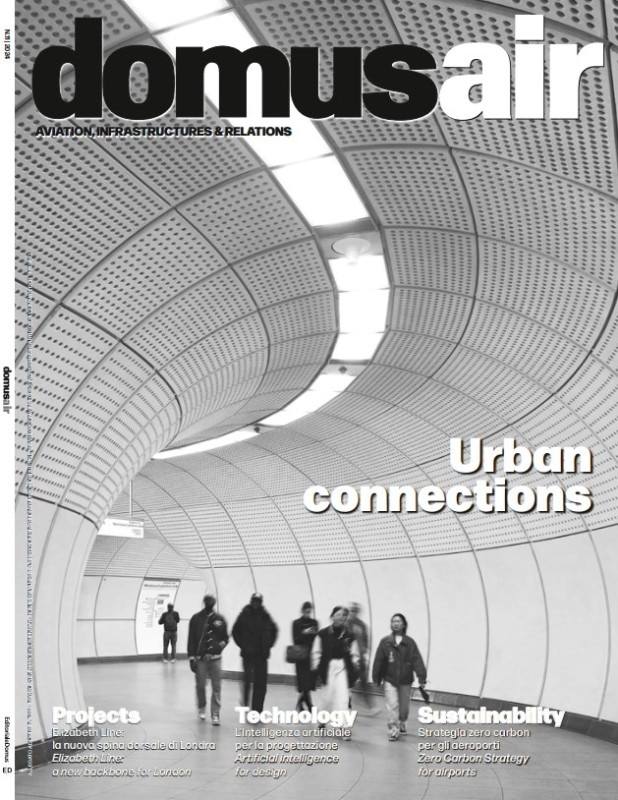This issue of DomusAir is dedicated to urban connections and the relationship with AI, the artificial intelligence that is changing every individual, social and global scenario. If at the beginning of the 2000s some scientific circles believed that it was not possible to realise ‘conscious machines’, in the last 20 years, this notion has been overturned first by simple logical reasoning and then by scientific evidence that is now our reality. One of the first notable human defeats dates back to 1997 when Deep Blue, an IBM computer, defeated world chess champion Garry Kasparov. Today, the number of tasks in which machines outperform humans is growing daily.
Giorgio Bottazzo, Professor of Computing Systems at the Scuola Superiore Sant’Anna in Pisa, notes that while in industrial production robots have long surpassed human capabilities in speed and precision, examples abound in many other fields as well. Many more than one might think. In the field of avionics, a key area of DomusAir, the control of airliners and, particularly, of highly unstable military aircraft, would not be feasible for humans without the assistance of computers. In medicine, neural networks have outperformed humans in such tasks as reading electrocardiograms, diagnosing lung cancer, identifying LANDING retinal diseases, and detecting cancerous formations on the skin, including recognizing brain alterations due to Alzheimer’s.
The impact of AI development extends beyond scientific fields. Many are now familiar with ChatGPT, a chatbot developed by OpenAI and launched in November 2022. Less well-known, however, is AIVA, a neural computer developed by Alzheimer’s University that, inspired by compositions from Mozart, Beethoven, and Bach, creates classical music and soundtracks indistinguishable from those composed by humans. Another is LipNet, a deep learning network capable of deciphering lip movements with 95% accuracy against the 55% accuracy of experienced humans. Throughout history, every revolution has eliminated certain professions while creating new ones that previously did not exist. Unlike the previous industrial revolution, which substituted human muscle with mechanical, hydraulic, or electrical methods, the AI revolution is automating mental activities, endangering many jobs that were thought to be safe from automation.

Take, for example, the state of California, which, as of June 2022, has allowed taxis without human drivers to transport passengers. The introduction of autonomous vehicles in road transport promises to reduce costs, pollution, and time. However, it also signals the eventual disappearance of truck driver jobs. The same principle applies to aviation and intermodal hubs. Technically, today’s aircraft can take off, fly, and land without a pilot. The primary reason this has not become widespread is psychological: people who are not comfortable receiving blood tests and diagnoses from an algorithm are not yet ready to spend eight hours at 12,000 metres in the air without a human reassuring them at the controls. The reality is that by 2030, machines will have the ability to be a ticket taker, petrol attendant, cashier, translator, bartender, and telephone operator. By 2040, more complex professions like bankers, writers, painters, musicians, accountants, lawyers, doctors, and surgeons will also see automations. Beyond this, even professions considered secure today, like software programmers, will be impacted.
ChatGPT’s ability to code quickly and reliably generate code in any programming language positions AI as an ideal solution for software companies, offering more reliability, speed, and cost-efficiency. What will happen in the future? It’s hard to say. Today, the debate is shifting towards ethics, questioning whether what is happening is right. However, the real concern is not the morality but the speed of what will happen. That is why it remains crucial to understand what will happen in the next 10 to 20 years so that we can devise appropriate individual, social and political strategies to manage the transition. In this context, the large global relationship infrastructure, a central theme of DomusAir, remains a critical laboratory that we should never lose sight of.


